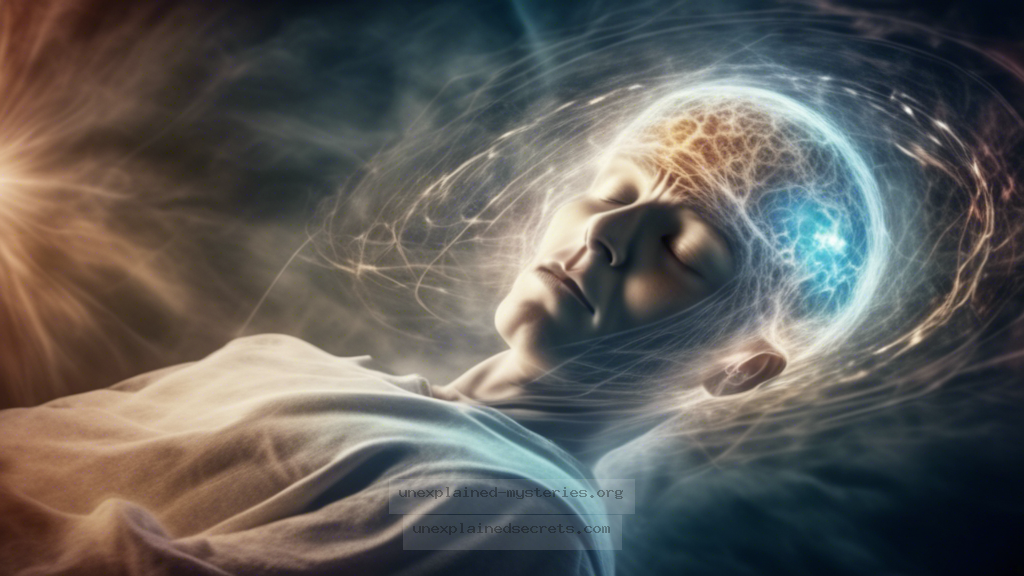What Does the Consistency of Near-Death Experiences Reveal About Consciousness After Death?
What Does the Consistency of Near-Death Experiences Reveal About Consciousness After Death?
The phenomenon of near-death experiences (NDEs) has long intrigued researchers, psychologists, and the general public alike, presenting a compelling puzzle about the nature of consciousness and what may lie beyond the threshold of death. With countless testimonies from individuals who have reported vivid experiences during moments of clinical death, the question arises: what do these consistent accounts reveal about the nature of consciousness after death? This inquiry is not just a matter of curiosity; it challenges our fundamental beliefs about life, death, and the potential for an existence beyond our physical reality.
Historical Context of Near-Death Experiences
Near-death experiences have been documented throughout history, with reports emerging from various cultures and religions around the globe. The earliest recorded instances can be traced back to ancient civilizations, where descriptions of journeys to other realms and encounters with divine beings appeared in texts such as the Egyptian Book of the Dead. In more recent history, the modern study of NDEs gained momentum in the 1970s, largely due to the pioneering work of Dr. Raymond Moody, who published “Life After Life” in 1975. In this seminal book, Moody compiled numerous case studies of individuals who experienced NDEs, highlighting common elements such as the sensation of floating outside the body, moving through a tunnel, and encountering deceased loved ones.
Since Moody’s initial research, a wealth of literature has emerged, further documenting NDEs and providing insights into this mysterious phenomenon. As a result, NDEs have become an essential focus within fields such as psychology, neuroscience, and even spirituality, prompting a deeper examination of what these experiences may signify about consciousness and the afterlife.
Core Concepts of Near-Death Experiences
At the heart of the discussion surrounding NDEs is the question of consciousness. When individuals undergo NDEs, many report experiences that appear to transcend the physical body. Common elements of NDEs include:
- Out-of-Body Experiences (OBEs): Many individuals describe a sensation of floating outside their physical bodies, observing medical personnel attempting to revive them.
- Tunnel Experiences: A frequent report involves traveling through a dark tunnel towards a bright light.
- Life Reviews: Some individuals recount experiencing a rapid replay of their life events, often accompanied by feelings of love and understanding.
- Encounters with Beings: Many NDErs report meeting deceased relatives, spiritual beings, or even a divine presence.
These elements, while subjective, share notable similarities across diverse cultural backgrounds, raising important questions about the universality of these experiences and what they may indicate about consciousness post-mortem.
Scientific Perspectives on NDEs
From a scientific standpoint, the study of NDEs often involves a multidisciplinary approach, incorporating psychology, neurology, and even quantum physics. Researchers like Dr. Sam Parnia and Dr. Bruce Greyson have conducted studies aimed at understanding the physiological and psychological mechanisms at play during NDEs. One prevalent theory suggests that NDEs may be a result of brain activity during traumatic events or hypoxia. Neurochemical responses, such as the release of endorphins and other chemicals, may create vivid hallucinations or feelings of euphoria.
However, this explanation has its limitations. For instance, the consistency of experiences reported by individuals who have undergone NDEs raises questions about whether these experiences can be solely attributed to brain function. Some researchers argue that the depth of consciousness experienced during NDEs cannot be fully explained by current scientific understanding of the brain and its processes.
Real-World Examples of Near-Death Experiences
Numerous documented cases shed light on the nature of NDEs. One of the most compelling examples is that of Dr. Eben Alexander, a neurosurgeon who experienced a profound NDE during a coma caused by a severe bacterial meningitis infection. In his book “Proof of Heaven,” Alexander describes a journey through a vivid landscape filled with colors and sounds, along with encounters with spiritual beings. His experience challenges conventional medical interpretations of NDEs, as it occurred when his cerebral cortex was shut down, raising questions about the source of his consciousness during this time.
Another notable case is that of Anita Moorjani, who experienced an NDE while battling cancer. She describes a state of unconditional love and acceptance, which ultimately led to her remarkable recovery from terminal illness. Moorjani’s account emphasizes the transformative nature of NDEs, suggesting that they may offer insights into healing and the interconnectedness of consciousness.
Comparative Accounts Across Cultures
While NDEs have common themes, cultural influences often shape the specifics of these experiences. For instance, individuals from Christian backgrounds may describe encounters with angels or Jesus, whereas those from Buddhist or Hindu traditions might perceive spiritual guides or deities from their own belief systems. This phenomenon suggests that while the essence of the NDE may be universal, the interpretation and details are heavily influenced by cultural contexts.
| Cultural Background | Common NDE Themes |
|---|---|
| Christian | Encounters with Jesus, angels, and heavenly realms. |
| Buddhist | Presence of spiritual guides, reincarnation themes. |
| Indigenous | Connection with ancestors and nature spirits. |
| Agnostic/Atheist | Experiences of profound peace and acceptance without specific religious imagery. |
Common Misconceptions About NDEs
Despite growing interest in NDEs, misconceptions abound. One prevalent myth is that all NDEs are positive or pleasant experiences. In reality, some individuals report distressing experiences known as “negative NDEs,” which may include feelings of fear, isolation, or encounters with malevolent entities. These experiences provide a more nuanced understanding of NDEs, illustrating that they are not universally blissful.
Insight: Not all NDEs are positive; negative experiences can also provide valuable insights into the human condition and consciousness.
Another misconception is the idea that NDEs are indicative of an afterlife. While some individuals view their NDEs as evidence of life after death, others interpret them through various psychological or neurological lenses. The debate continues, and it is crucial to approach the subject with an open mind.
Best Practices for Investigating NDEs
Given the complexities surrounding NDEs, researchers and enthusiasts alike should approach the study of these phenomena with rigor and an open mind. Best practices include:
- Documentation: Collect detailed accounts from NDErs, noting the context, emotional responses, and any physiological conditions present at the time.
- Interdisciplinary Collaboration: Engage with experts across fields, including psychology, neuroscience, and theology, to broaden the understanding of NDEs.
- Ethical Considerations: Respect the personal and sensitive nature of individuals’ experiences, ensuring that investigations are conducted with empathy and care.
Future Developments and Ongoing Research
As interest in NDEs continues to grow, future research may delve deeper into the neurological, psychological, and spiritual aspects of these experiences. New technologies, such as functional MRI and EEG, could provide insights into brain activity during NDEs, potentially leading to a better understanding of consciousness itself. Additionally, the integration of spiritual perspectives into scientific discourse may foster a more holistic approach to studying NDEs and consciousness.
Organizations such as the International Association for Near-Death Studies (IANDS) are at the forefront of research and education on NDEs, working to compile case studies and promote dialogue among researchers, clinicians, and the public. As our understanding of consciousness evolves, the implications of NDEs may challenge existing paradigms and contribute to a greater understanding of life, death, and what may lie beyond.
Conclusion: The Ongoing Mystery of Consciousness and NDEs
The consistency of near-death experiences raises profound questions about the nature of consciousness and whether it persists beyond physical death. While scientific perspectives offer valuable insights, the subjective and often transformative nature of NDEs suggests that our understanding of consciousness is far from complete. As we continue to explore these mysteries, the intersection of science, spirituality, and personal experience will shape the ongoing conversation about what it means to live, die, and potentially transcend.
By examining historical accounts, cultural interpretations, and individual testimonies, we gain a more nuanced understanding of NDEs and their implications for consciousness after death. As research progresses, we may find ourselves closer to unraveling the enigma of consciousness and the possibility of an existence beyond this life.
Other Articles
Recent Posts
- What Happened to Flight MH370? The Conspiracy Theories That Still Haunt Us
- What Secrets Lurk Within the Walls of the Infamous Trans-Allegheny Lunatic Asylum?
- What Evidence Supports the Existence of Bigfoot in the Pacific Northwest?
- What Happened to the Indus Valley Civilization? Unraveling the Mysteries of Ancient Urban Life
- Can Telepathy Be Scientifically Proven Through Laboratory Evidence?







